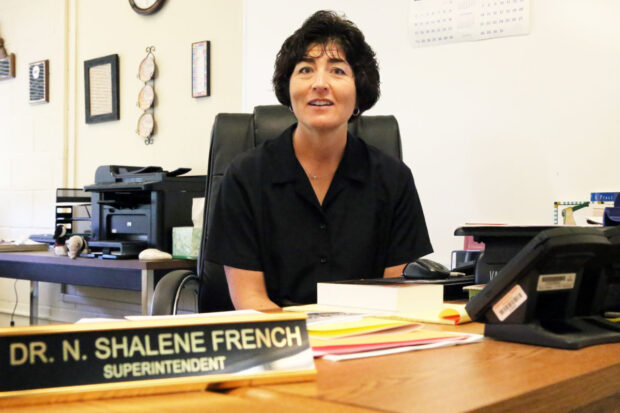Lt. Gov. Brad Little and a bipartisan coalition of 18 education and community leaders told legislators Wednesday that the cost of not investing in early childhood learning is too high for Idaho to bear.
“The future — both of our quality of life and our economic success — is dependent on this issue,” Little said.
Idaho was one of only six states that do not put state money into pre-K, according to a recent report from the Education Commission of the States.
Rep. Hy Kloc, D-Boise, Idaho Association for the Education of Young Children Executive Director Beth Oppenheimer and Idaho Business for Education President/CEO Rod Gramer organized Wednesday’s hearing. Although the coalition has been unable to introduce a pre-K or early learning bill in the Legislature, they used the informational hearing as a chance to build momentum.
The group offered no specific proposal or suggestion for lawmakers. But they pointed to cooperative efforts in red states such as Mississippi and Oklahoma as potential blueprints to follow.
Three Idaho superintendents shared data from limited, local preschool programs they have launched on their own.
In Basin, for instance, 52 percent of the students who enrolled in preschool scored at advanced levels on state assessment tests, Superintendent John McFarlane said.
That compares with just 19 percent of the students who did not attend preschool.
“Our preschool program helps enrich their lives and increase their vocabulary and prepares them for kindergarten,” McFarlane said.
Boise Superintendent Don Coberly and Caldwell Superintendent Shalene French also said they have seen positive results from their early childhood learning programs.

Although French said data from Caldwell’s P-16 program is limited, it does show positive impacts by equipping students to meet grade-level benchmarks in kindergarten and beyond.
Nobody spoke against pre-K or early childhood learning during the hour-long hearing, which packed the approximately 65-seat committee room. In the past, legislators have said they prefer to bolster the existing K-12 education system before adding pre-K to the mix. Other lawmakers reluctant to back state-funded pre-K say they believe early childhood education is most appropriately handled inside the home.
However, Park Price, the chairman of the board at Bank of Idaho, said any state investment would pay off.
“For every dollar invested (in pre-K) you save $6.30 through reduced social services, less expensive remediation, increased work force productivity and less need for incarceration,” said Price, citing Nobel Prize-winning economist James Heckman.
Speakers emphasized that any Idaho program must involve parents and offer flexibility for families and school districts.
“This is not one size fits all,” said Rep. Christy Perry, R-Nampa, one of the most outspoken Idaho Republicans backing early childhood learning.
Other speakers included former Ada County Sheriff Gary Raney, retired Third District Judge Gregory Culet, Canyon County Prosecuting Attorney Bryan Taylor and retired U.S. Navy Four Star Admiral Archie Clemins.
The group made similar presentations before the Senate Education Committee Wednesday afternoon.
School safety — by the numbers
Seventy-five percent of Idaho schools control their main entrances, and nearly 60 percent of schools require visitors to check in.
However, only 19 percent of schools have a school resource officer on site — and only 8 percent of schools have an SRO assigned to a single campus.
These are a few early findings from the state’s new Office of School Safety and Security.
Created by the 2016 Legislature, and launched on July 1, the office has a tall task. The office is supposed to conduct safety assessments at the state’s 660 school buildings, on a three-year cycle.
So far, inspectors have go through about 120 schools, office manager Brian Armes told the Senate Education Committee Wednesday afternoon.
In presenting the office’s first report to lawmakers, Armes said his office is trying to get into as many schools as quickly as possible. But first, Armes needed to ramp up his office, hiring three regional security analysts and an administrative assistant.
The staff’s early findings are mixed.
With a majority of schools monitoring its front entrance and requiring visitors to check in, the schools are addressing their most immediate threat. A threat is more likely to come not from an armed intruder, but from a parent engaged in a custody fight. As such, Armes said, school administrators need to do a good job of monitoring who is on campus at all times.
When it comes to another priority — establishing a safe perimeter — the early numbers aren’t as promising. Only 39 percent of campuses have fences, and only 8 percent have a fence that can be secured.
Idaho Education News reporter Kevin Richert contributed to this report.
